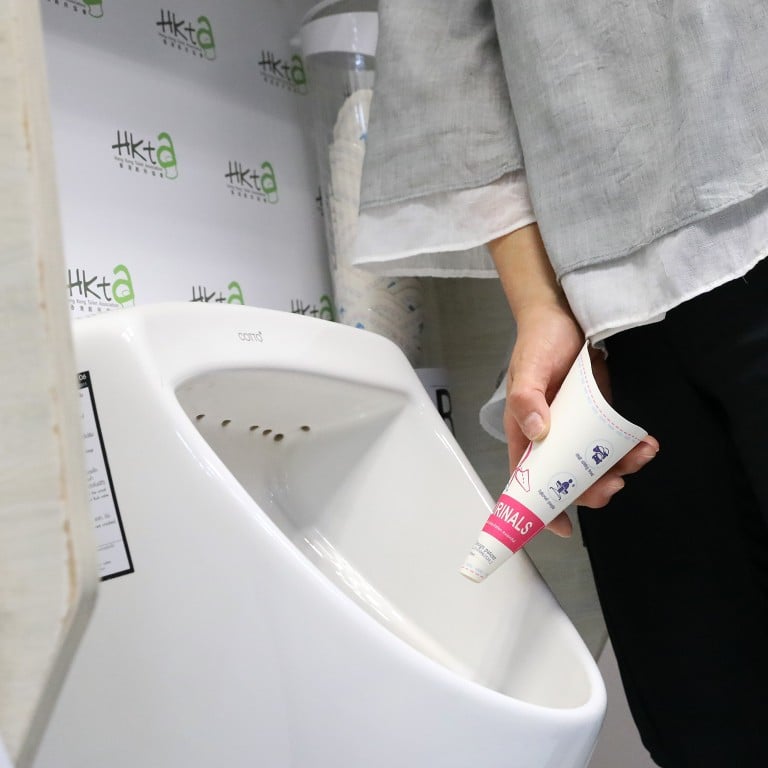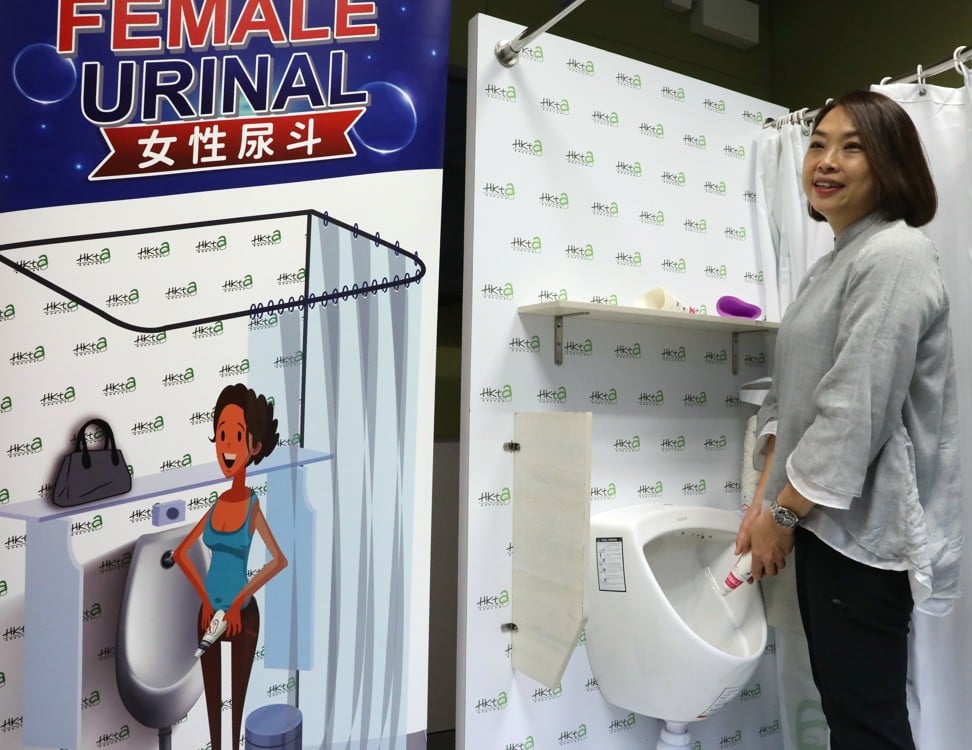
Out in 90 seconds: female urinals will halve peeing time for women, says Hong Kong Toilet Association
- The group says urinals, rather than new cubicles, are the answer to cutting the perennially long queues outside women’s washrooms
- However, it says there’s a lack of interest by designers to conduct a pilot test of the proposal
According to the Hong Kong Toilet Association, such facilities would cut peeing time to just 1.5 minutes, compared with the usual two to three minutes, and thus help to shorten queues outside women’s washrooms.
Urinals would also take up only half the space of a full cubicle, said the group, adding that the facilities could include disposable paper urine funnels to help women aim accurately, and a shelf above for bags to be stored.
“It is much more feasible to install additional female urinals than to build new cubicles, especially in smaller and older public toilets,” said the group’s vice-president Henry Hung Chi-kuen, who has a 40-year career in plumbing engineering.
However, Hung said there was a lack of interest by universities to design such a facility, and the group was also struggling to find organisations, such as event organisers, willing to conduct a pilot test of female urinals in the city.
In Germany and France, female urinals are available in temporary lavatories at events such as music festivals, but not in permanent facilities, the association said.
The commission’s report also found that the Food and Environmental Hygiene Department was not repairing defects in public restrooms quickly enough.
In February, Financial Secretary Paul Chan Mo-po had announced a HK$600 million (US$76.5 million) plan to revamp 240 public loos, about one-third of the city’s toilets, over five years.
This means 48 public washrooms are supposed to be renovated each year, a statistic slammed by the toilet association.
“At this rate, it would take 16 years to upgrade all of the toilets in the city. I hope we can speed up the process for all public toilets to a timeline of five years,” Hung said.
Why Hong Kong’s public washrooms have been dubbed ‘reservoirs of drug-resistant bacteria’
The toilet association – which includes plumbers, engineers and sanitary goods distributors – recently completed an inspection on 160 public washrooms across the city which found unsanitary levels of hygiene at some locations.
The dirtiest toilet was found to be at Pei Ho Street Market in Sham Shui Po, where the floor was slippery and had a strong odour caused by a blocked flushing system, Hung said.
The group used a “CASH” criterion – a mnemonic which stands for “Comfort, Accessibility, Safety and Hygiene” – to carry out its inspection.
The Food and Environmental Hygiene Department said public toilet renovations were ongoing, and not all of them required the same level of work, such as newly built ones.



